When you’re the only one writing grants, you don’t have time to start from scratch every time a new application comes up. That’s where a Grant Writing Toolkit comes in—a collection of reusable content, data, and templates that make the grant writing process faster, smoother, and less overwhelming.
This is part three of our “Writing Grants When You’re the Only One Doing It” series. If you’ve ever felt like you’re constantly digging for the same information, this article is for you.
What Is a Grant Writing Toolkit? 🗂️
A Grant Writing Toolkit is a centralized place (digital or physical) where you store commonly used grant content so you can easily pull it into new proposals. Instead of scrambling for details every time, you’ll have the essentials ready to go.
Here’s what to include:
📌 Organizational Info: Mission statement, history, leadership bios, and legal details (EIN, 501(c)(3) letter, etc.).
📌 Program Descriptions: Clear, compelling summaries of your organization’s key programs.
📌 Statement of Need Data: Statistics, research, and local data that show why your work is important.
📌 Impact Stories: Testimonials, case studies, and success stories to illustrate program effectiveness.
📌 Grant Proposal Templates: Standardized responses to common funder questions, like program outcomes, sustainability plans, and partnerships.
📌 Financial Information: Latest budgets, audited financial statements, and cost breakdowns.
📌 Letters of Support & MOUs: Pre-written letters from partners, stakeholders, or beneficiaries that you can quickly tailor to new applications.
Step 1: Choose Where to Store Your Toolkit 📂
Your toolkit needs to be organized and accessible so you’re not wasting time searching for files. Choose a system that works best for you:
🖥️ Digital Storage (Best for Easy Access & Updates)
- Google Drive, Dropbox, or OneDrive – Create a structured folder system for easy searching.
- Notion or Evernote – Store reusable text, templates, and key data all in one place.
- ClickUp or Trello – Organize grant tasks, deadlines, and key resources in a project management tool.
📒 Physical Storage (Best for Paper Docs & Quick Notes)
- A dedicated grant binder with printed copies of key information.
- Index cards or sticky notes for tracking funder-specific preferences and deadlines.
Step 2: Standardize & Reuse Grant Content 📝
One of the biggest time-wasters in grant writing is rewriting the same sections over and over. Your toolkit should include pre-written, customizable templates for:
✅ Organizational History & Mission – A strong but flexible description of your nonprofit.
✅ Statement of Need – A general version that you can tailor for each proposal.
✅ Program Descriptions – A basic template for each program that you can adjust as needed.
✅ Common Application Questions – Responses to questions funders frequently ask (e.g., “How will you measure success?”).
✅ Budget Narrative – A standard explanation of costs that can be tweaked for different applications.
💡 Pro Tip: Create a “Plug & Play” document where you store these sections and adjust them for each grant.
Step 3: Keep Your Toolkit Updated 🔄
A Grant Writing Toolkit is only useful if it’s current! Set a reminder to update it quarterly so you always have fresh stats, program details, and financials.
✅ Schedule Updates: Add it to your quarterly planning routine.
✅ Ask Your Team for Updates: Program staff, finance, and leadership should share new numbers or impact stories.
✅ Save Successful Proposals: Keep copies of funded proposals to reference for future applications.
Save Time, Write Faster, Get Funded 💰
A strong Grant Writing Toolkit helps you work smarter, not harder. Once you build it, you’ll spend less time chasing down information and more time writing strong, fundable proposals.
👉 Next Steps:
✅ Choose a storage system for your toolkit (Google Drive, Notion, or a binder).
✅ Start gathering key documents and templates from past proposals.
✅ Set a quarterly reminder to keep it updated.
✅ Check out Grant Writing Made Easier for a detailed Grant Writing Toolkit Template.
💬 Do you already use a toolkit? What’s been the most useful part for you? Let’s talk in the comments! 🚀







Leave a Comment